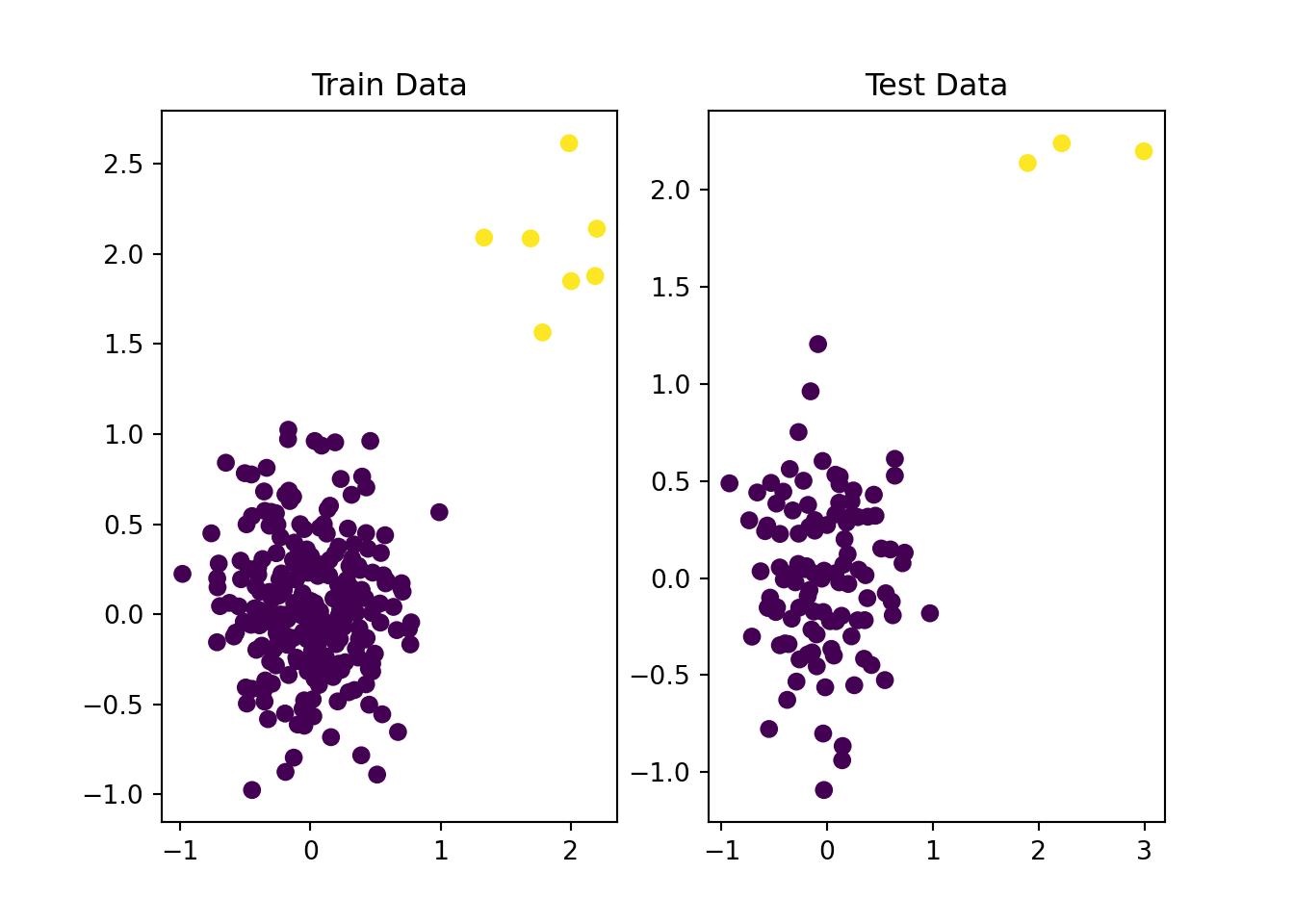Isolation Forest for Anomaly Detection
 Photo by kazuend
Photo by kazuendIntroduction
According to the Wikipedia, “Anomaly detection (also referred to as outliers detection and sometimes as novelty detection) is generally understood to be the identification of rare items, events or observations which deviate significantly from the majority of the data and do not conform to a well defined notion of normal behavior.” So, basically we are identifying any weird events or data points. Now, these anomalies could be good or bad depending upon your problem. For instance, in fraud detection the anomalies are bad, meaning you want to reduce as much as possible. However, if you are trying to find a new star in the galaxy then the anomalies in the astronomy image might be good for you.
The application of the anomaly can be found in many domains like cyber-security, financial fraud, medicine, law-enforcement, network traffic, fault detection etc. The common nature of the problem in all of those domains are there will be very few instances of the anomalies and most of the data are normal. It’s like finding a needle in the haystack.
The simple outliers analysis that is done using box-plot’s IQR range, Z-test are lighter version of the outliers analysis. However, it is not robust where the data goes beyond uni-variate. Therefore, there are various machine learning algorithms are developed that are more robust and efficient in finding the outliers/anomalies.
Anomaly detection can be supervised or un-supervised depending upon the dataset and data labels. In general, unsupervised technique is more common and relevant to the application. Below, we will talk about an unsupervised machine learning algorithm known as Isolation Forest to detect anomalies.
Isolation Forest
From the name, you might have guessed it should be somewhat similar to the ‘Random Forest’, which is true. Isolation Forest is the ensemble method which fits numerous decision tree and aggregate the results from the each tree to get the outcome. Even though the basic principle of Random Forest and Isolation Forest are same, there are some subtle differences which I will be discussing below. You should definitely have some basic foundation knowledge of Random Forest to understand the comparison.
Data Subset:
In the random forest, the data is bootstrapped meaning the sub-samples are selected with replacement. However, in the Isolation Forest random data points are selected without replacement which means the there will not be any duplication in the sub-sampled data set. According to the original paper, the idle number of sample for the each tress in the Isolation Forest is 256 (Liu et.al 2012)
Split Criteria
In the decision tree that is build under Random Forest, Gini Impurity, Entropy or Information Gain criteria are used to find the best features for splitting the nodes. However, in isolation forest the nodes are split randomly. According to Liu et.al (2012), “Partitions are generated by randomly selecting an attribute and then randomly selecting a split value between the maximum and minimum values of the selected attribute.”
Now, let’s try to understand what does it means by isolation and how does it work.
The Idea of Isolation
According to the original paper by Liu et.al (2012), isolation means “separating an instance from the rest of the instances”. The main intuition behind isolation is that, the anomalies will be isolated early as compared to inliers. The collective distance(from root node to leaf node of respective anomalies) of the random decision tree for anomalies will be shorter. Let’s look at the below figure to understand it more.

dt_isolation_forest
From the diagram, let suppose it is one of the decision tree from our isolation forest. Let P1 be the path distance for the anomaly and p2,p3 are for the inliers. The main intuition is that anomalies will be isolated early or split early because they are far away from the normal cluster. Therefore, the path distance will be shorted. Now, we average the path distance from all of the trees for the respective data-points.
Algorithm Breakdown
The anomaly detection using iforest can be broke down into two steps i.e. training and evaluation. I will not got over nitty-gritty details on the math but will try my best to make you understand the working principles.
Training
In this phase, we are building the decision tress from our data. Below is the training algorithm that I extracted from original paper.

train_algo
The inputs are the
Evaluation
In the evaluation stage, the path distance is calculated from the each tree and aggregated. After, calculating the distance, at the end, anomaly scores are calculated for the each observations. I am not going to explains the details of the formula here but just stating for reference only:
Here,
The anomaly score,
- If instances return
- If instances have
- If all the instances return
Performance as Compared to Other Anomaly Detection Algorithm
There are various anomaly detection algorithms out there. Some of the famous ones are one-class SVM, clustering based methods (K-Means), density-based (KNN). Here, I am not comparing myself but re-iterating the result achieved by the authors in the original paper. They compared various open-sourced dataset with the algorithms such as ORCA (Bay et.al. 2003), LOF (Breunig et,al. 2000), one-class SVM and Random Forest.
Even though anomaly detection mostly is unsupervised learning (unlabeled
data) but for the purpose of comparison authors have used the labeled
data and calculated AUC score. From the below figure, you can see
iforest is achieving highest AUC score on most of the datasets. The

performance_comp
The performance of the algorithm might depend on one’s respective
problem and use case. However, IForest is not only popular for it’s
performance but also for the training and evaluation time. The Isolation
Forest is pretty fast as compared to other algorithms. The below figure
compares the time taken by different compared algorithm. The

proc_time
Python Code Demo with Sklearn
In this section, I will demo how to implement the Isolation Forest in Python using the Scikit-Learn (sklearn) Library. I am using a dummy dataset that is also synthetically generated using sklearn.
# Libraries Import
from sklearn.datasets import make_blobs, make_moons
import pandas as pd
import numpy as np
from sklearn.model_selection import train_test_split
from sklearn.ensemble import IsolationForest
from sklearn.metrics import accuracy_score
from sklearn import tree
from matplotlib import pyplot as plt
import warnings
warnings.filterwarnings('ignore')
# Dummy dataset Generation
data = make_blobs(centers=[[0,0],[2,2]],
cluster_std=0.4,
n_samples=[350,10],
n_features=2,
random_state=112233)
# Features of the 'data'
feat = pd.DataFrame(data[0], columns=['X1', 'X2'])
# Target column of the 'data'
target = pd.DataFrame(data[1], columns=['target'])
# Combine Both to make a data-frame
df = pd.concat([feat, target], axis=1)
print(df['target'].value_counts())## 0 350
## 1 10
## Name: target, dtype: int64"""There are total 360 data-points, out of which 350 are of class 0 and 10 of class 1. Also, there are 2 continuous features names as X1 and X2. As mentioned previously, even anomaly detection is majorly unsupervised, for the sake of comparision we are derriving as supervised learning"""## 'There are total 360 data-points, out of which 350 are of class 0 and 10 of class 1. Also, there are 2 continuous features names as X1 and X2. As mentioned previously, even anomaly detection is majorly unsupervised, for the sake of comparision we are derriving as supervised learning'
# Train-Test Split
X_train, X_test, y_train, y_test = train_test_split(feat, target, train_size=0.7,
random_state=112233,
stratify=target,
shuffle=True)
# Visulize the Train & Test data
fig, axs = plt.subplots(1,2)
axs[0].scatter(x=X_train['X1'], y=X_train['X2'], c=y_train['target'],)
axs[0].set_title("Train Data")
axs[1].scatter(x=X_test['X1'], y=X_test['X2'], c=y_test['target'])
axs[1].set_title("Test Data")
plt.show()
"""From the figure, it is clear that what data-points are anomaly. However, this
is just for test case. Yellow points (class 1) are out anomalies."""## 'From the figure, it is clear that what data-points are anomaly. However, this\nis just for test case. Yellow points (class 1) are out anomalies.'
# Fit Isolation Forest Model
"""By default, the model will have 100 tress and the subsample size is 256.
There is another parameter call contamination rate, which is percentages of
anomalies supposed to present in the dataset."""## 'By default, the model will have 100 tress and the subsample size is 256. \nThere is another parameter call contamination rate, which is percentages of \nanomalies supposed to present in the dataset.'mdl = IsolationForest(random_state=112233, contamination=0.02).fit(X_train)# Visualizing one of the Isolation Tree
#fig, ax = plt.subplots(1,1)
_ = tree.plot_tree(mdl.estimators_[0])
plt.show()

The visual of the above figure is not that clear and that’s not what I want you to notice. In theory, we mentioned that the anomalies will be separated as leaf node with few split as compared to the in-liers. So, if you look at the decision tree right hand part, there are bunch of values that are separated with just few split however, majority of them, on left side, took many splits. Those data-points that took few split are anomalies. This is just for a single tree and remember we have 100.
# Prediction on the Test Data
pred = mdl.predict(X_test)
"""The Predict function outputs the values as 1 and -1. -1 being anomalies.
We need to convert this back to 0 and 1. For us the class 1 are anomalies"""
# Decode to it original format
pred_decode = [1 if i==-1 else 0 for i in pred]
# Accuracy
print(f"The accuracy is: {accuracy_score(y_test, pred_decode)}")
"""We got the accuracy of 100% on the test data, which is what I was expecting, as the data was easily sepearatable.
However, the purpose of the demo is to understand how to use algorithm with sklearn. You will face complex situation in real-world"""
Additional Notes
Contamination Rate
Contamination rate is the ratio of anomalies presented in the dataset. We can get the value for contamination rate from our domain knowledge depending upon the problem or by looking at the historic trend. The contamination rate/level ranges between 0.02 and 0.5. If the contamination rate is way higher like 0.5 and above, I think the problem will change from anomalies detection to something like classification or clustering. The accuracy and predictive performance depends upon the contamination level so, it is crucial to identify relevant contamination level before modeling.
Continuous Variable
In the original paper too, only continuous variables are used. We definitely can do one-hot, ordinal and other types of encoding to convert the categorical data to it’s respective numeric values. I am not sure, how the algorithm performs when we have majority of categorical features. That will be something to experiment with in future.
Finally, we are at the end, I hope this article gives your basic intuition about the isolation forest and it’s working principles along with some hands-on demo in Python. One will see problems of anomaly detection widely in the real-world therefore, it is important to have some tools and knowledge to tackle those problems. I would highly recommend to read the original paper by Liu. et.al (2012), which contains a through information on algorithms and also on comparison with other anomaly detection methods.
References
Anomaly detection. (2023, January 2). In Wikipedia. https://en.wikipedia.org/wiki/Anomaly_detection